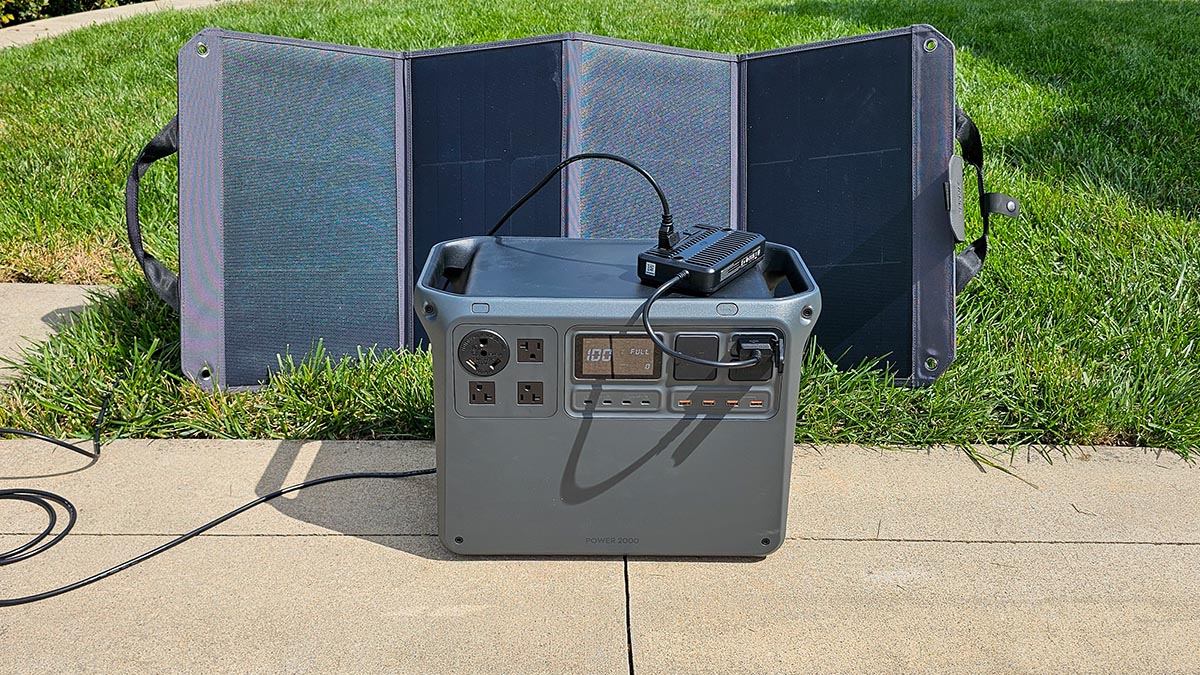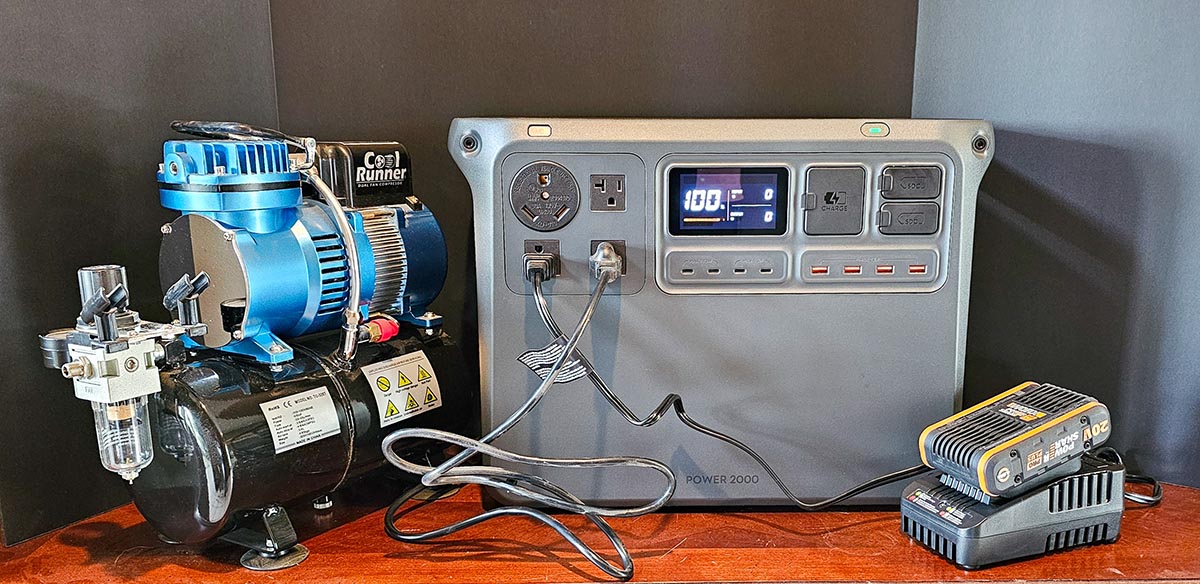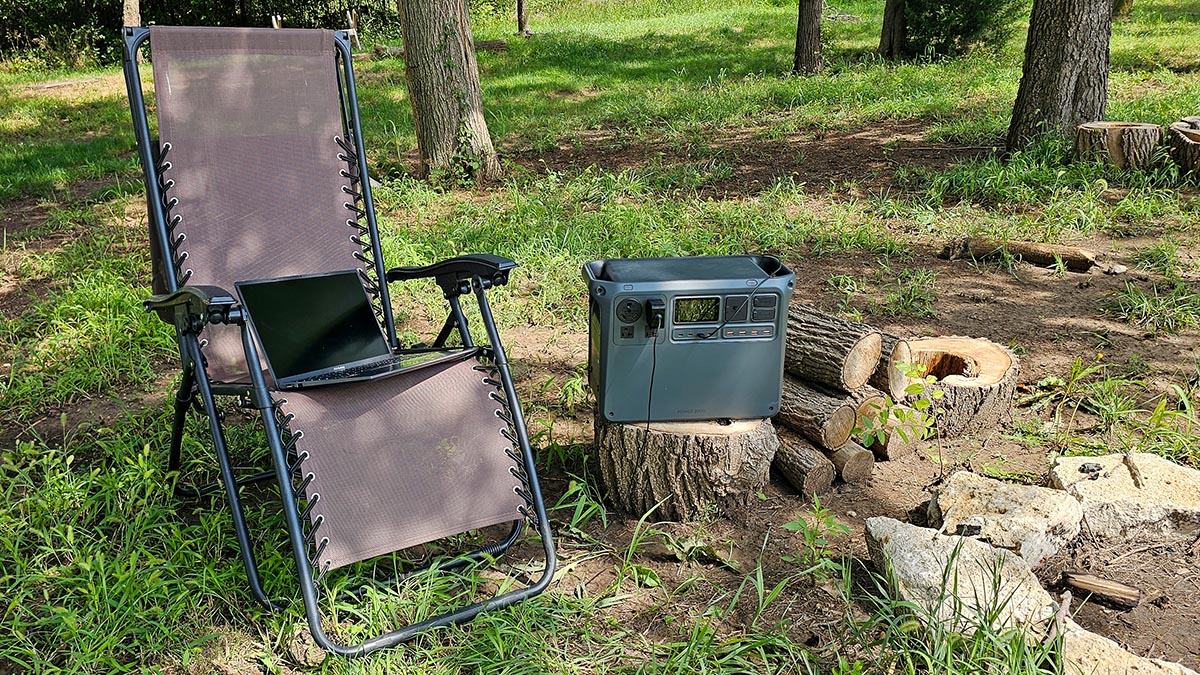

We may earn revenue from the products available on this page and participate in affiliate programs. Learn More ›
Rating: 4.8/5
When DJI announced the Power 2000 Portable Power Station, I was curious. The brand is best known for its high-quality drones with spectacular cameras, not power stations. But after testing the Power 2000 with everything from a fridge to my drone batteries, I came away impressed. I’ve tested other portable power stations, and this just might be my favorite.
Real World Powering

The DJI Power 2000 is rated for a 2048-watt-hour (Wh) capacity with a 3000-watt (W) continuous output, enough to handle over 99 percent of household devices. In my own testing, it powered an espresso machine, a space heater, and a mid-size fridge at the same time. I also tested it by powering my PC with dual monitors, a cordless saw battery, a couple of digital devices, and my DJI Mini 2 drone batteries (not simultaneously).
Based on typical draws (space heater ~1,500W; mid-size fridge ~100 to 150W average with a higher surge; PC and dual monitors ~200 to 400W), my simultaneous load was roughly 1,900 to 2,100W—an easy task for the Power 2000’s 3,000W continuous rating.
I also tested the fridge by itself: I plugged it into a fully charged DJI 2000, and I let it run for 6 hours. The temperature in the fridge stayed cold, and when I unplugged it, the DJI still registered a 53 percent charge.
Charging Speed: Faster Than Promised
DJI claims a full charge from the wall in 90 minutes and 80 percent in 55 minutes. In practice, I found it even faster. Plugged into a standard outlet, it went from near-empty to full in just over an hour.
Even more surprising: with a 100W solar panel (and a sunny day), the station jumped from 85 to 100 percent in just 35 minutes. That’s a strong showing for solar charging, which usually lags far behind grid power. A car charger is sold separately, but I’d consider it essential if you plan to take the DJI 2000 on road trips.
Noise, Heat, and Everyday Use
One of the quietest power stations I’ve tested, the Power 2000 only registered 29 dB on my meter at 5 feet away when the fan kicked in—about as quiet as a whisper. It never got noticeably warm, even under heavy loads.
The DJI Home app adds a nice layer of convenience: I used it to monitor charge levels, see output stats, and remotely toggle AC power. It’s also designed to send error code alerts, though I didn’t receive any during testing.
Build, Portability, and Price

Despite weighing 47 pounds, the unit wasn’t too difficult to move around, thanks to its two built-in handles. It’s not feather-light, but it’s a good portable power station for camping, for emergencies, or even for a weekend drone outing. The build is high quality. It incorporates flame-retardant materials and is rated to handle up to a 1-ton load.
Currently selling for around $1,299, the Power 2000 is pricier than some, but it’s cheaper than the Generac GB 2000 ($1,599) that I tested a couple of years ago. Accessories like the car charger and expansion batteries cost extra, which adds up quickly, but the DJI boasts a 10-year lifespan (thanks to LFP battery cells rated for 4,000+ cycles).
Is the DJI Power 2000 Right for You?
The DJI Power 2000 isn’t just a backup battery—it’s a versatile, quiet, and surprisingly compact power station that handled everything I threw at it. For drone enthusiasts, the dedicated fast-charge drone ports make it especially compelling. For homeowners, it’s a reliable backup power for emergencies. And for campers, it’s a quiet alternative to gas generators. I recommend it for campers/RVers, outdoor enthusiasts who need dependable 3,000W output in the field, and anyone who’s looking for quiet, reliable energy in the event of an emergency.






